Quaternary Fossils from New York Bight Beaches
The fossils illustrated below are examples found along the wrackline along
beaches in the region. Fossils are genuinely scarce. However, they sometimes
are exposed by severe beach erosion or erosion offshore. They sometimes wash
up after storms or are dumped on the beach during dredging or beach replenishment
operations.
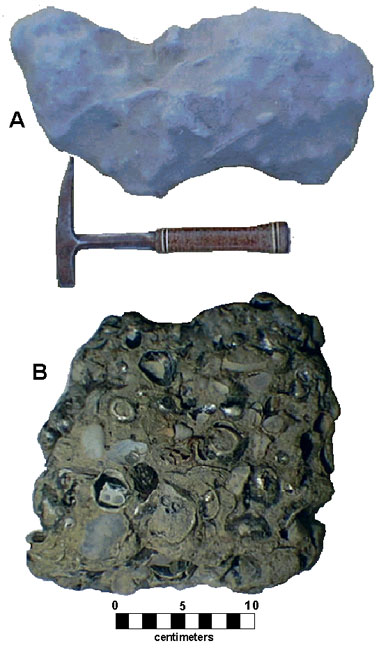 |
| Figure 148. Concretions from the Pleistocene/Holocene Gardeners Clay:
A. concretion displaying massive bioturbation structures (hammer handle
is 1 foot for scale); B. Concretion containing fossils of jingle shells,
spruce pine cones, bone, and oyster shell . These specimens washed up on
the beach at Sandy Hook during a winter storm. |
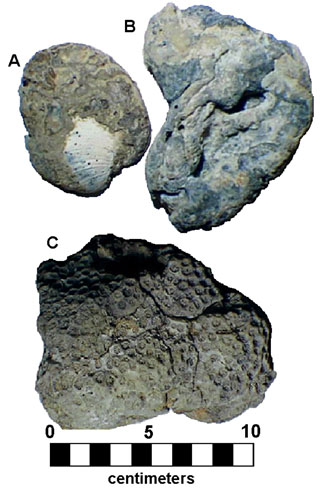 |
| Figure 149. New York Bight beach fossils. Calcareous sponges: A. sponge
encrusting a quahog shell; B. sponge encrusting an oyster shell; C. Stony
Coral encrusting a concretion. These specimens were derived from Pleistocene-Holocene
marine sediments, but both all species occur in the modern New York Bight.
All specimens were found on Breezy Point, NY. |
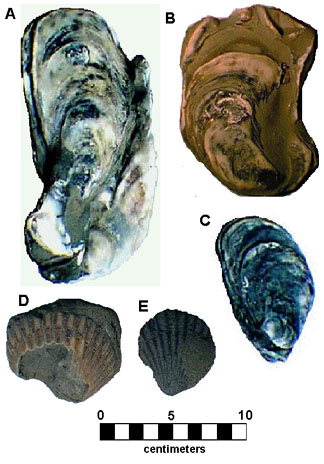 |
| Figure 150. New York Bight beach fossils. Bivalves: A-C: Oysters preserved
in growth position preserved in sideritic sandstone matrix; found on Breezy
Point, NY. A radiocarbon analysis of a sample of oyster shell in concretion
matrix yielded an Early Holocene date of 7,610 (+/-150) years before present.
The matrix of oyster shell-bearing concretions contain an abundance of gastropods
(mud dog whelk). Both species thrive in estuary environments. D-E: Bay scallops
in concretion matrix; Sandy Hook, NJ. |
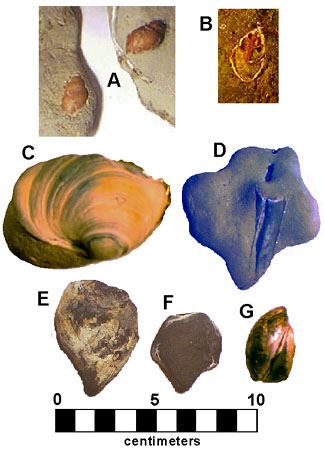 |
| Figure 151. New York Bight beach fossils. Bivalves: A-B. gastropods (mud
dog whelk); Breezy point, NY. C. surf clam; Breezy Point, NY. D. razor clam;
Sandy Hook, NJ. E-G. Internal molds of bivalve in lithified bay mud; Breezy
Point, NY. |
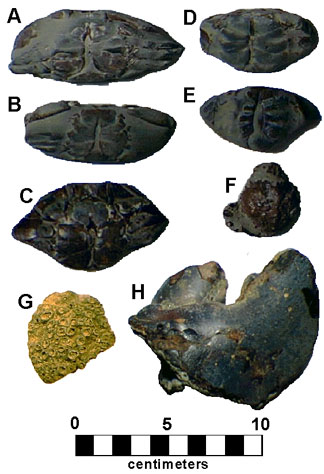 |
| Figure 152. New York Bight beach fossils: Arthropods: A-C. Blue claw crabs
(Breezy Point, NY). D-E. green crabs (Breezy Point, NY). F. spider crab
(Sandy Hook, NJ). G. barnacles attached to shell (Sandy Hook, NJ); H. American
lobster claw (Sandy Hook, NJ). |
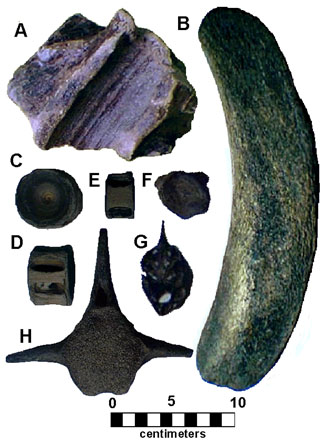 |
| Figure 153. New York Bight beach fossils from Rockaway Beach, Queens,
NY: A. American walrus skull (left ventral view - note tusk socket); B.
whale vertebrae. C-F. fish or shark vertebrae. G-H. unidentified vertebrae. |
|





